Lot No : 31
Auction No : 7
The Yuezhi rulers of Northwestern Bactria, Pre- Kushan Empire, Sapadbizes (c. 130 BCE to 90 BCE), Silver Hemidrachm weighing 1.50 grams. Obv: Features a helmeted bust facing right with the Greek inscription. Rev: Lion standing right, with a tamgha of a hill and crescent above, flanked by Greek inscriptions: NANAIA on both sides (ODH#516). Sapadbizes was succeeded by Kujula Kadaphises (90-50 BCE), and it is believed that Sapadbizes laid the foundation for the Kushan Empire. Very Fine+, Rare
Lot No : 32
Auction No : 7
Kushan Empire, Heraios (c. 100 AD), Silver Obol, Weight: 0.60 grams, Obv: Diademed bust of King Heraios facing right, Rev: A soldier standing right, holding a wreath, Greek Legend (left and right): Translation: "Heraios, son of Koppanus." This inscription confirms the ruler’s identity, linking him to the broader Kushan royal lineage. Reference: MAC 2840 Historical Context: Heraios, though not as widely recognized as other Kushan rulers like Kujula Kadaphises or Kanishka, played an important role in the early Kushan Empire. His reign, which likely occurred around 20-40 CE, is crucial in understanding the consolidation of the Kushan dynasty. While his historical presence is somewhat obscure, his coinage reflects the continued blending of Greek, Persian, and Indian cultural influences that defined the early Kushan period.
Lot No : 33
Auction No : 7
Kushanas – Vasudeva I (c. 195-230 CE), Gold Dinara, 8.00grms, Obv: King Vasudeva I is depicted standing, facing forward with his head turned left. Flames emanate from his shoulder as he holds a trident in his right hand while making an offering at an altar to the left. A Bactrian legend encircles the design. Rev: The god Shiva stands facing, positioned before the Nandi bull. Shiva holds a trident in his right hand and a noose in his left, with a tamgha in the upper left field and the label Ohpo beneath. All within a dotted border (Mitch ACW 3389). Note: In Extremely Fine condition, Rare.
Lot No : 34
Auction No : 7
Kushana Empire, – Kanishka II (c. 230-240 CE), Gold Dinar, 7.80grms, Obv: King Kanishka II is depicted standing to the left, holding a trident in his right hand while making an offering at an altar to the left. Above the altar, a garlanded trident is shown, with the Brahmi letters 'Vi' to the right and 'Bh' to the left of his legs. Rev: The nimbate deity Ardoksho is seated on a throne, facing forward, holding a garland and cornucopia. A tamgha appears in the upper left field, with the legend in the right field. (Gobl 541). Note: This superb, broad-flan coin is well-struck and in Extremely Fine condition, making it Very Rare.
Lot No : 35
Auction No : 7
Indo-Scythians, Azilises (c. 85-45 BCE), Silver Tetradrachm, Weight: 8.60 grams, Obverse: Armored king advancing right on horseback with lowered spear. Reverse: Kharoshthi legend Maharajasa rajarajasa mahatasa Ayalishasa ("Of Great King, King of Kings Azilises the Great"). Goddess standing left, holding lotus and filleted palm branch. Monogram to left. Kharoshthi letter to left and right. Mint: Uncertain, possibly in the Paropamisadai or western Gandhara. Reference: ISCH 2, 52T, 56T, ODH# 568, Very Fine+, Rare King
Lot No : 36
Auction No : 7
Indo-Scythians, Azes (c. 58-12 BCE), Silver Tetradrachm, Weight: 9.50 grams, Obv: Armored Scythian king advancing right on horseback, holding elephant goad. Kharoshthi letter to right. Rev: Kharoshthi legend Maharajasa rajarajasa mahatasa Ayasa ("Of Great King, King of Kings Azes the Great"). Athena standing right, holding spear and shield, and making benediction gesture. Monogram to left and right. Mint: Uncertain, possibly in western Gandhara. Reference: ISCH 2, 98T, ODH# 637, Rare Control Mark, Almost Uncirculated.
Lot No : 37
Auction No : 7
Indo-Scythians, Azes (c. 58-12 BCE), Silver Tetradrachm, Weight: 9.90 grams, Obv: Armored Scythian king advancing right on horseback, holding elephant goad. Kharoshthi letter to right. Rev: Kharoshthi legend Maharajasa rajarajasa mahatasa Ayasa ("Of Great King, King of Kings Azes the Great"). Athena standing right, holding spear and shield, and making benediction gesture. Monogram to left and right. Mint: Uncertain, possibly in western Gandhara. Reference: ISCH 2, 98T, ODH# 637, Rare Control Mark, Almost Uncirculated.
Lot No : 38
Auction No : 7
Indo-Parthian, Abdagases I (c. 46–60 AD), Silver Tetradrachm, Weight: 9.60 grams, Obv: King, holding whip, mounted on horse walking left. Gondopharan symbol to right. Lettering: ("Of King Gondopharnes, son of Abdagases"). Rev: Zeus standing right, holding long sceptre; right arm outstretched. Lettering: GADAPHARABHRATAPUTRASA MAHARAJASA AVADAGASHASA ("Of the Great King, King of Kings, son of Gondopharnes, Abdagases"), Senior# 228.107, Very Fine+, Rare
Lot No : 39
Auction No : 7
Kunindas, Tribal Republic, Amoghabhuti (200-100 BC), Silver Drachm, Weight: 2.10 grams, Obv: Deer to right with a fire-altar on its back. Shrivatsa between the horns. Three-arched hill below deer. Goddess Lakshmi standing in front of the deer, holding a lotus stalk. Brahmi legend around reading ‘Rajno Kunimdasa Amoghabhutisa Maharajasa’. Rev: Six-arched hill (Chaitya) at center, surmounted by an altar. Nandipada on top, triangle standard and swastika in left field, tree-in-railing in right field, wavy line below. Partially seen Kharoshthi legend around: ‘Rana Kuni(m)dasa Amoghabhutisa Maharajasa’, Pieper 1192,Very Fine, Rare.
Lot No : 40
Auction No : 7
Audumbara (1st Century BCE), Rudradasa, Copper Unit, 2.30 grms, Obv: Temple, trident-axe on right, Brahmi legend mahadevasa raña (on top) rudradasa (right) odubarisa (left). Rev: Railed tree, forepart of elephant on right, riverline below, Kharoshthi legend of which rudradasa is visible on left. AIC#1032, Very Rare in this condition The Audumbaras, located in the Beas Valley (modern-day Kangra, Gurdaspur, and Hoshiarpur), were neighboring tribes to the Yaudheya and Kuninda. Literary sources trace their history back to at least the 5th century BCE. Their territories were non-monarchically structured, and they regained sovereignty after the decline of the Mauryan Empire. The Audumbaras maintained their independence through diplomatic skill and military strength, resisting the expansion of Indo-Greek powers. However, their political influence began to fade with the rise of the Kushan Empire. Coins attributed to the Audumbaras stop appearing after the 1st century CE, marking the end of their historical prominence.

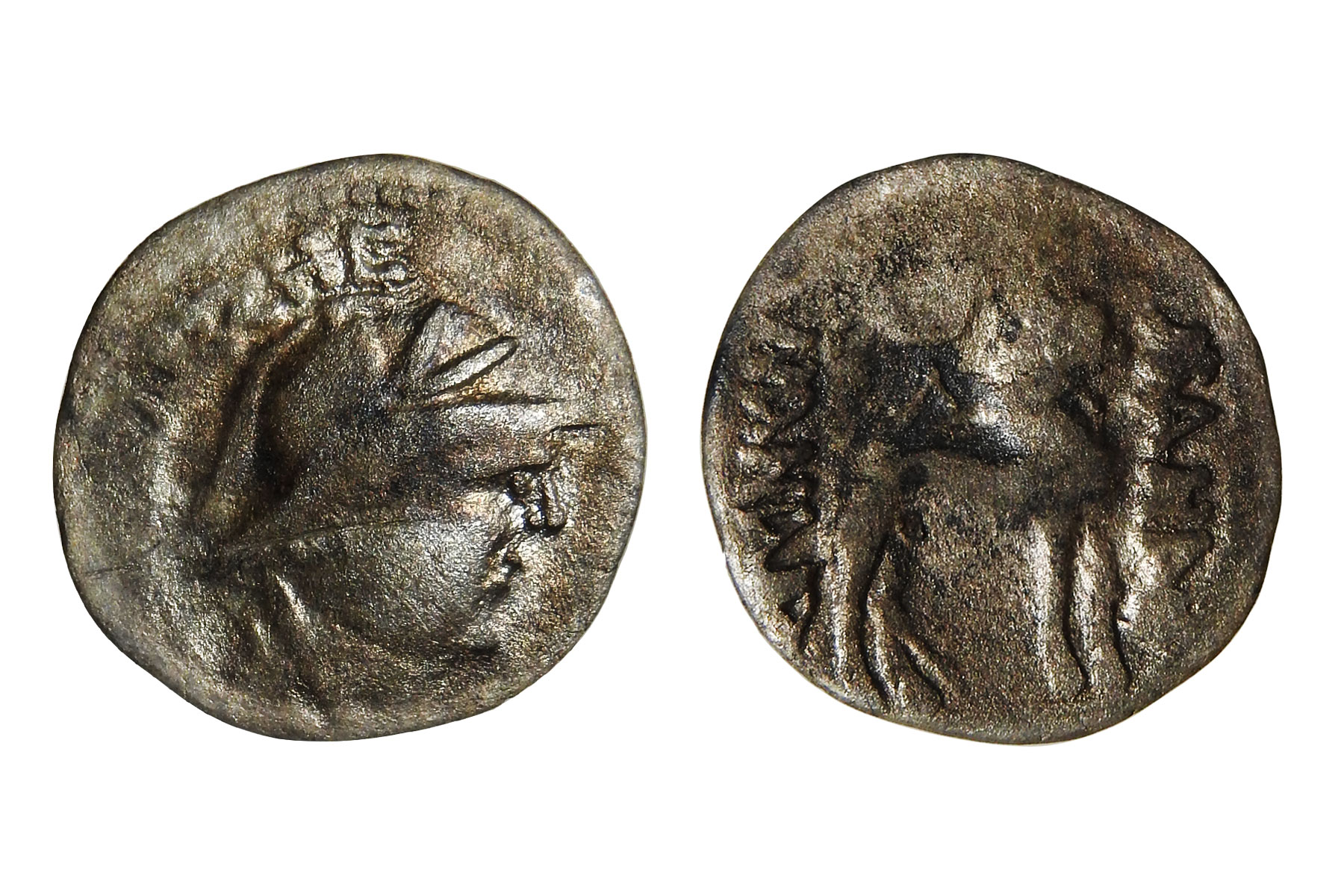
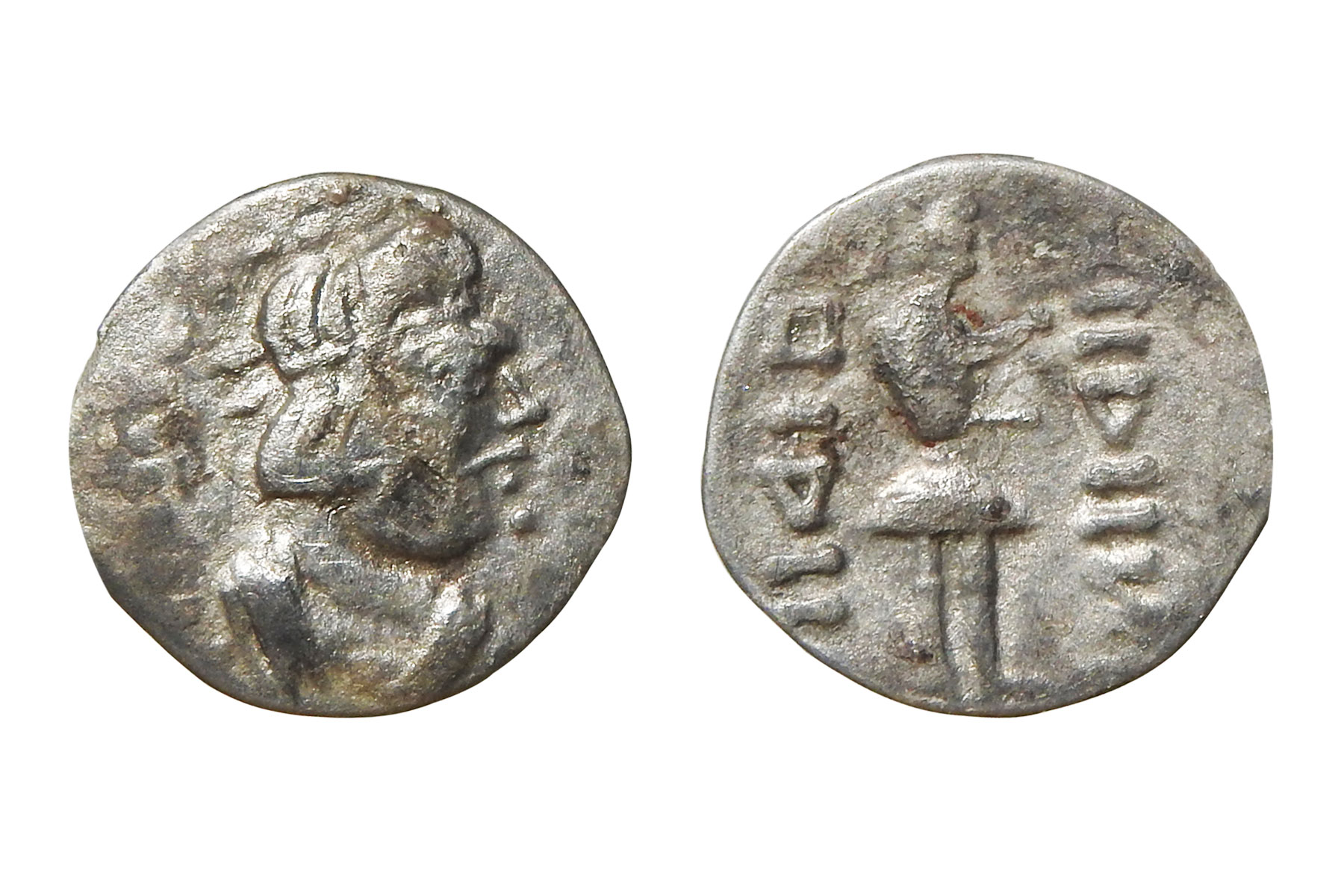
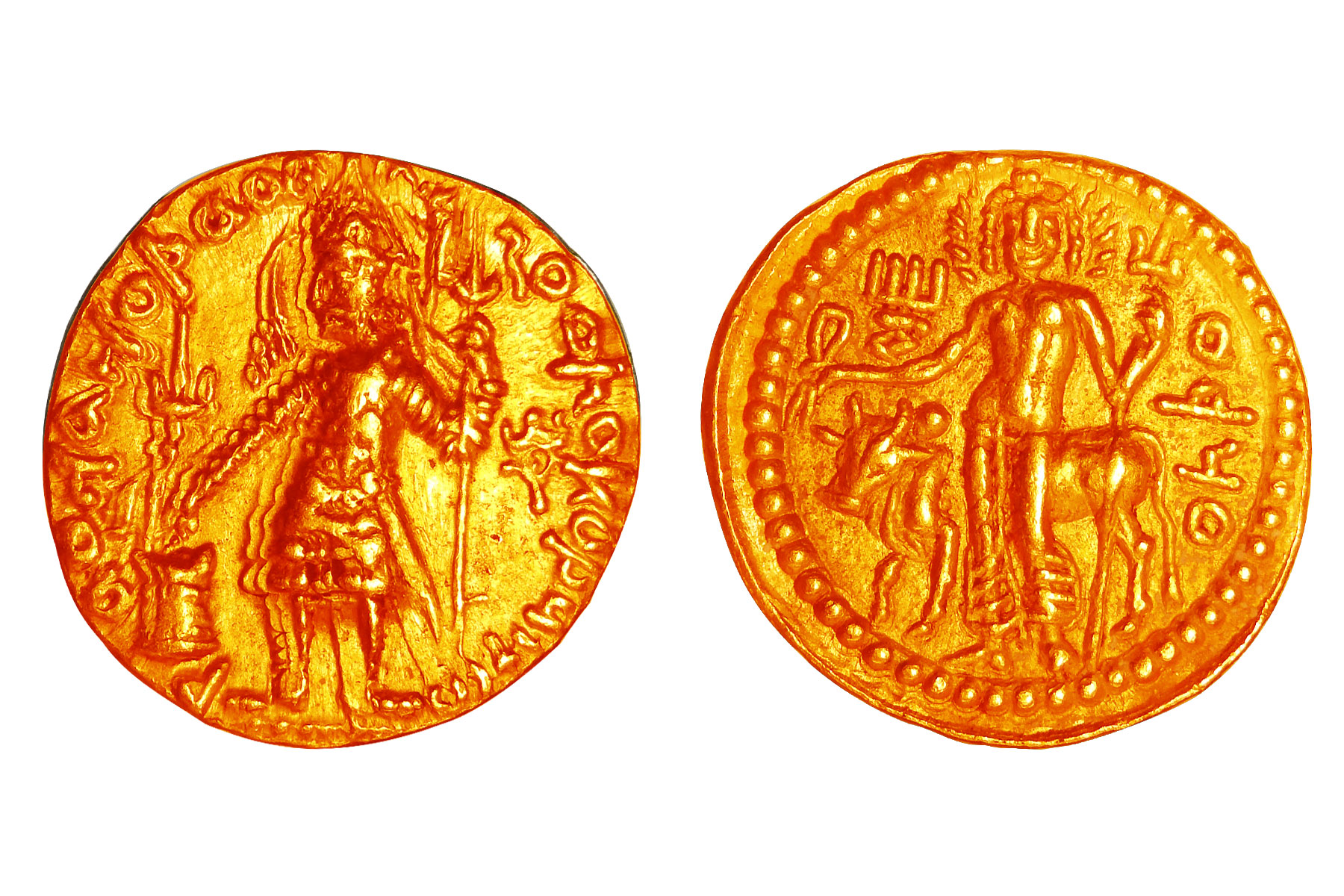
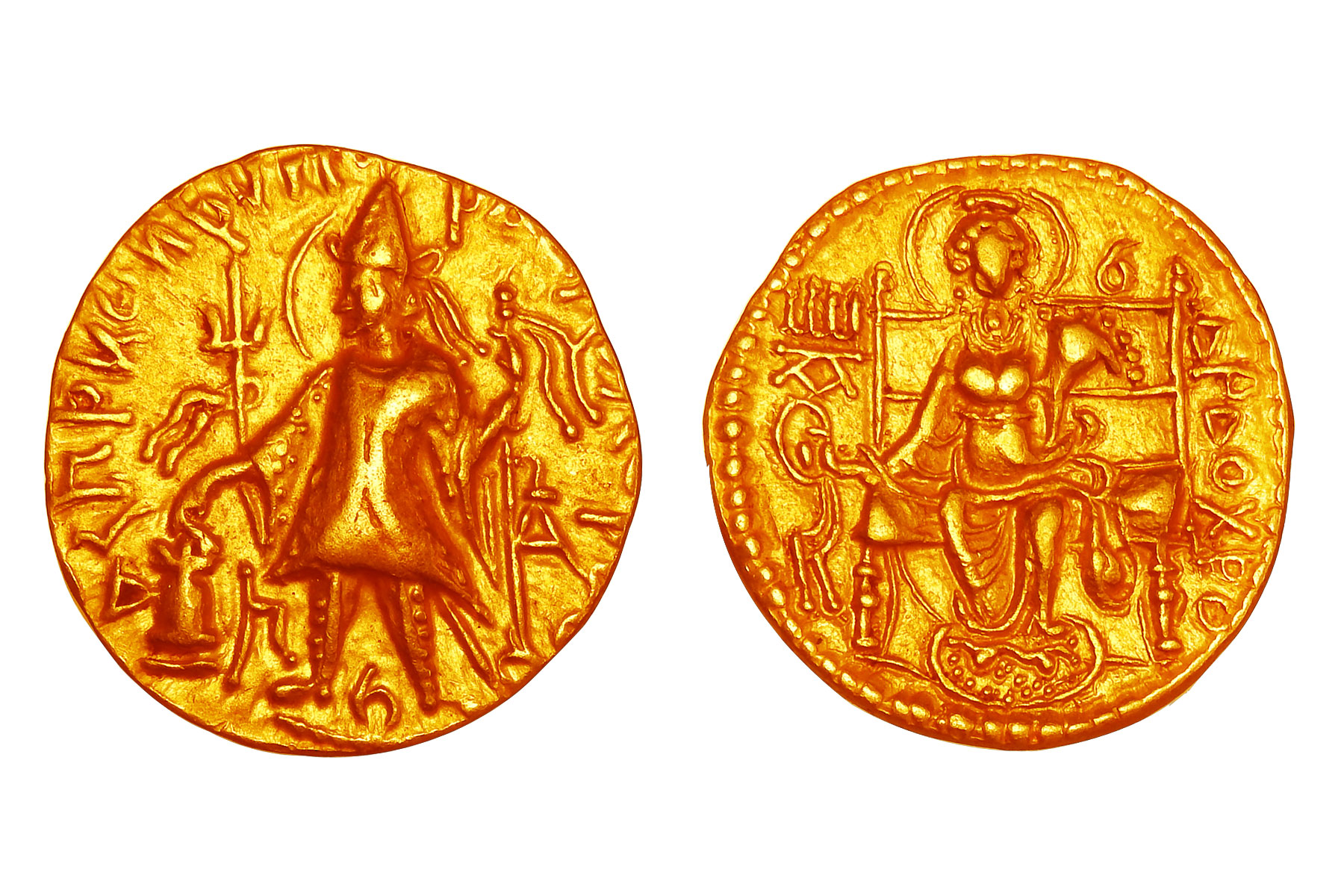
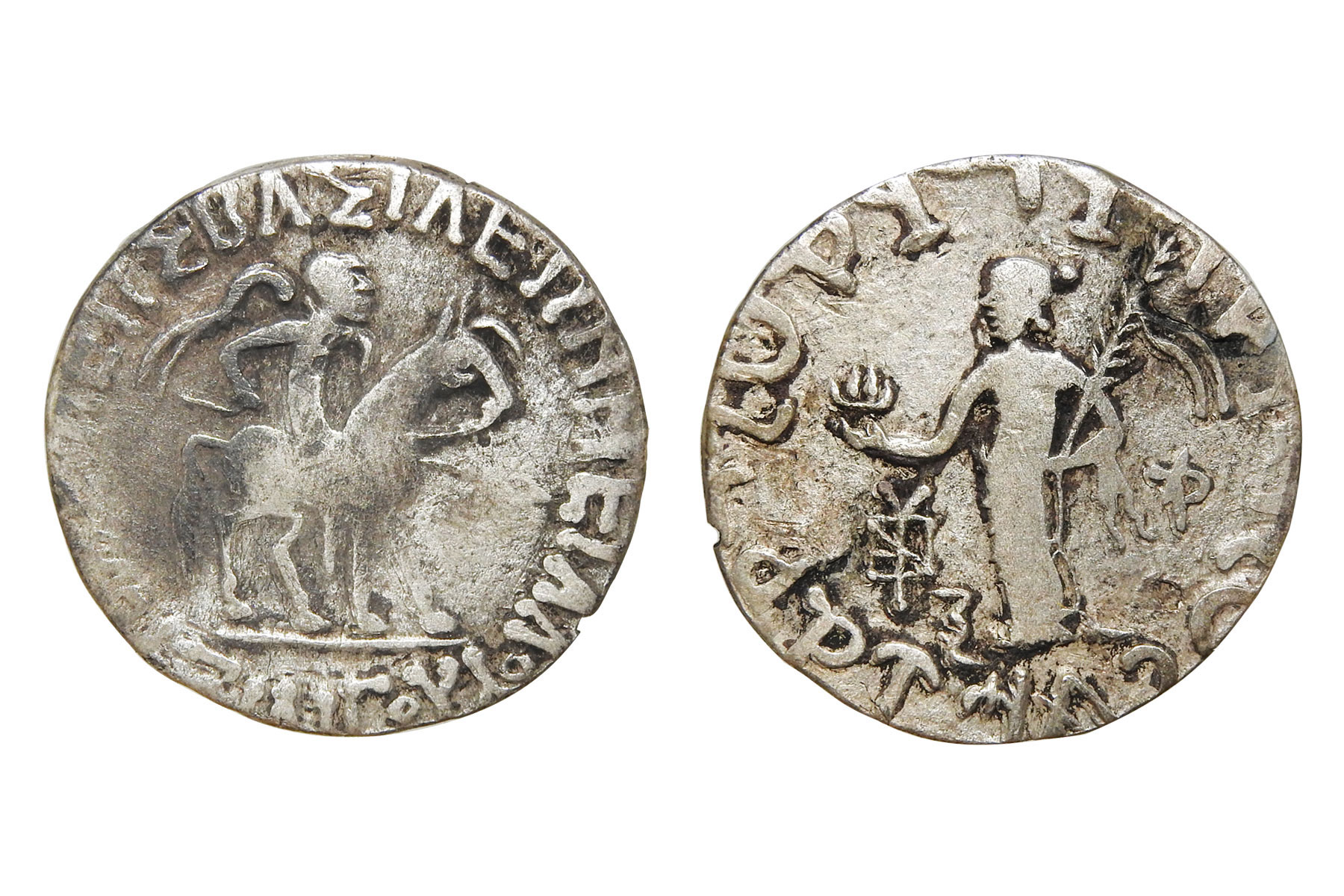
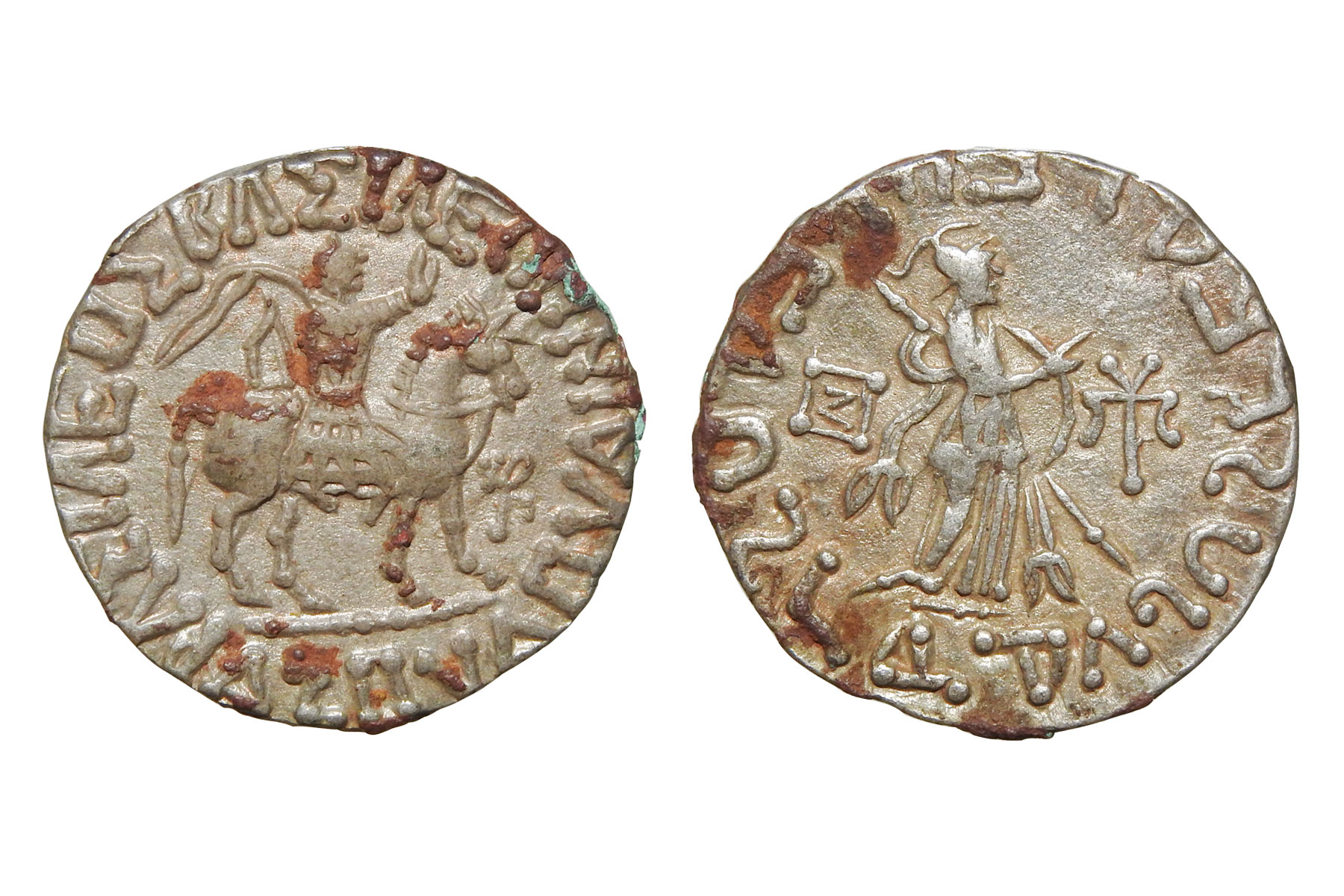
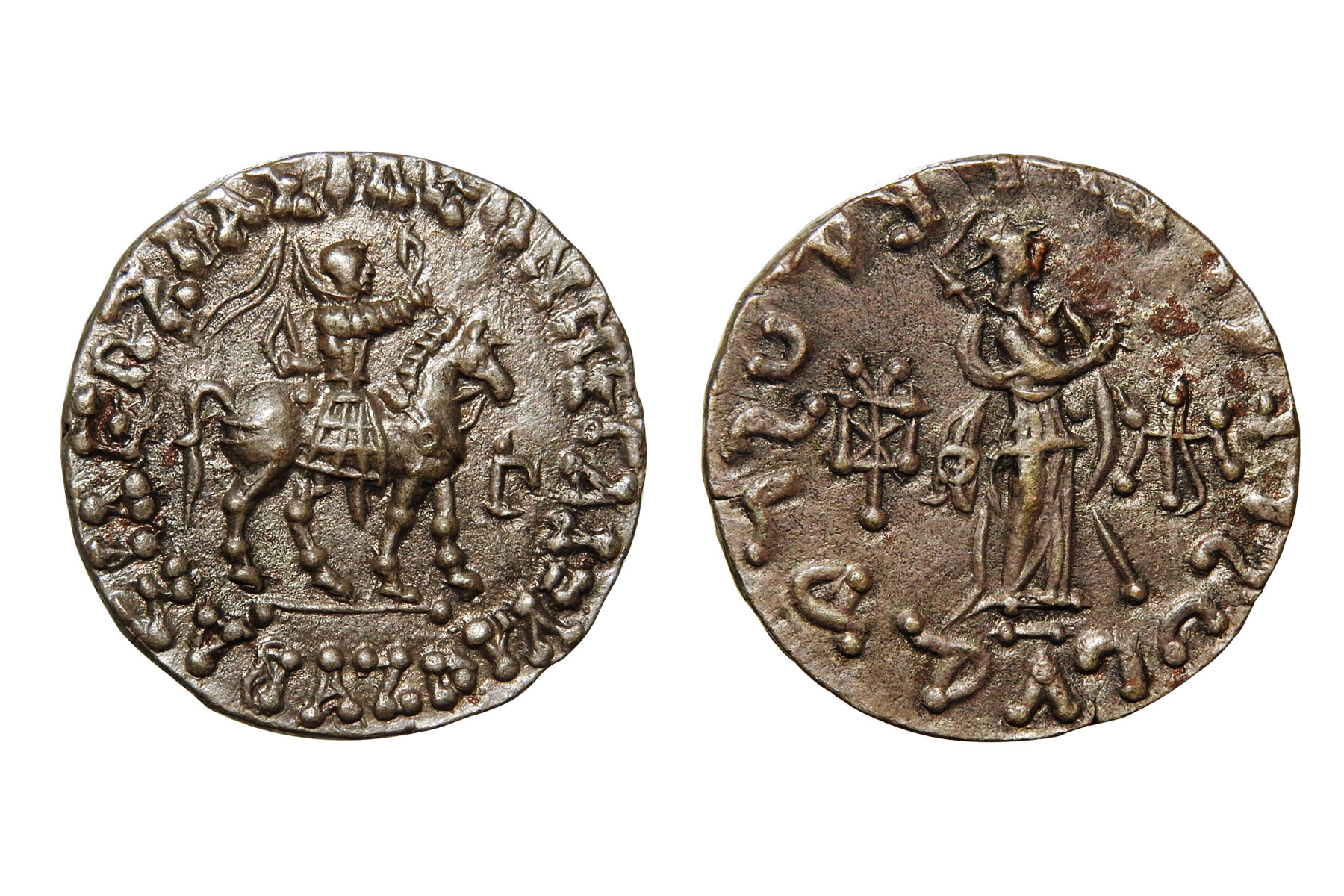

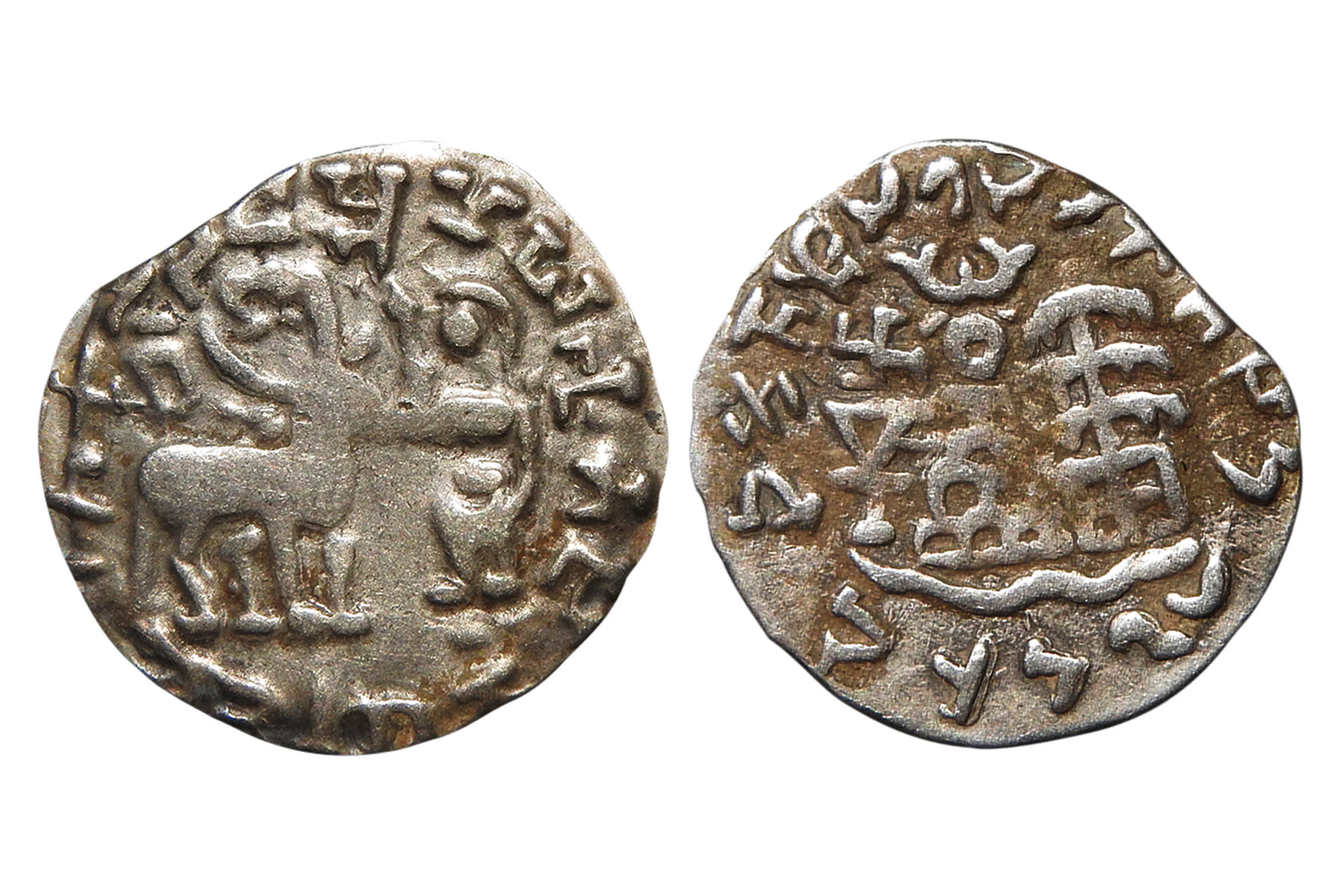
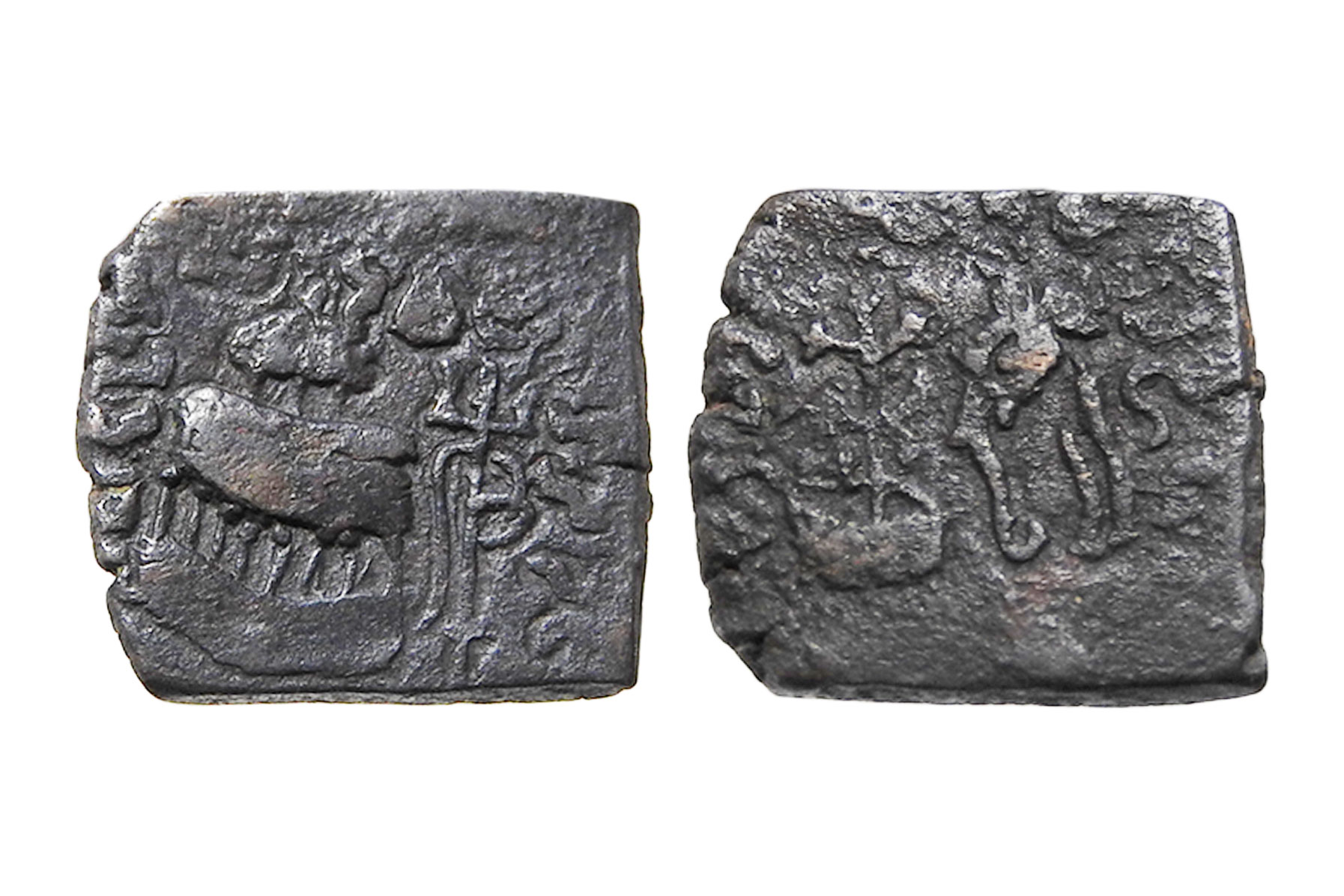
 WhatsApp
WhatsApp